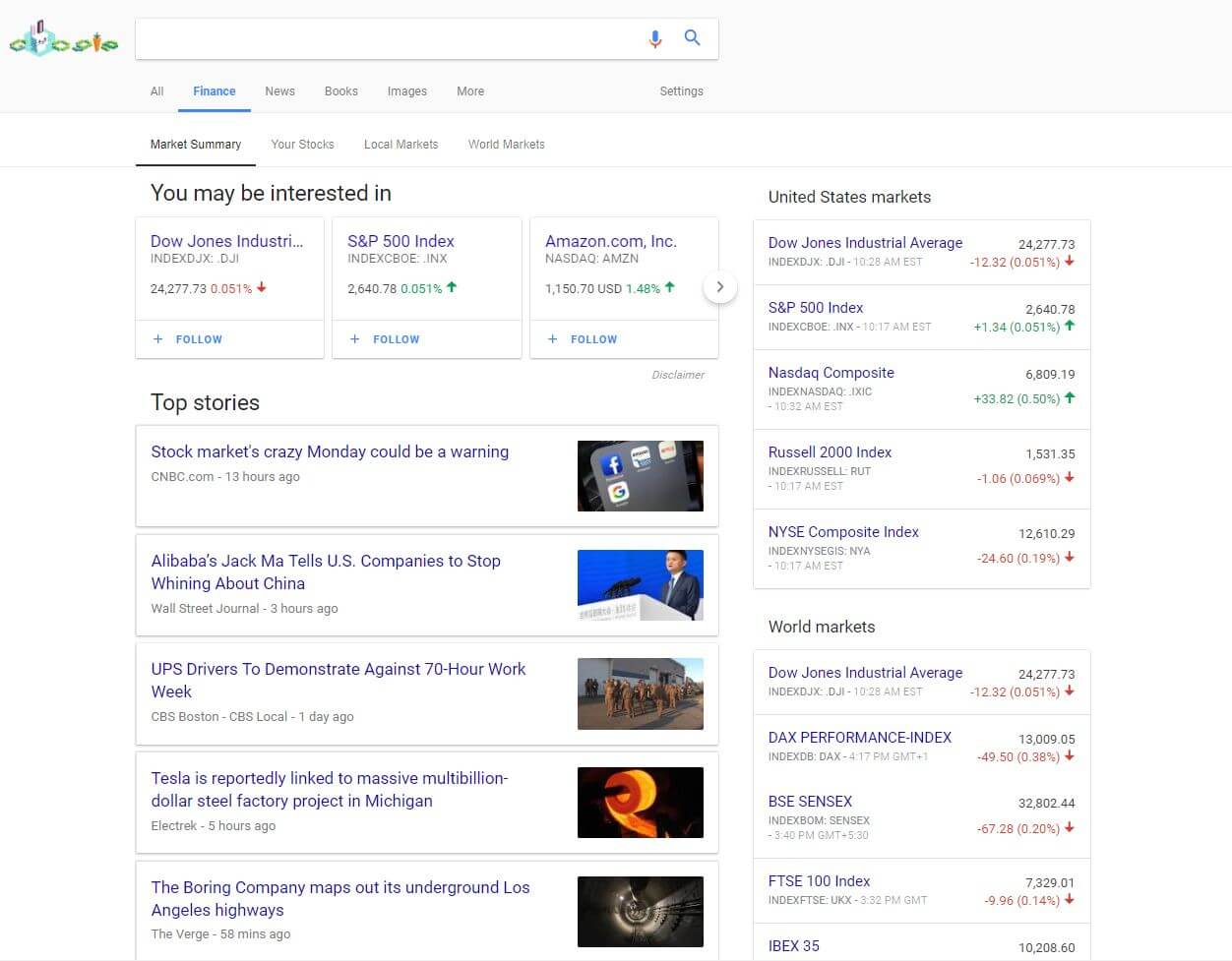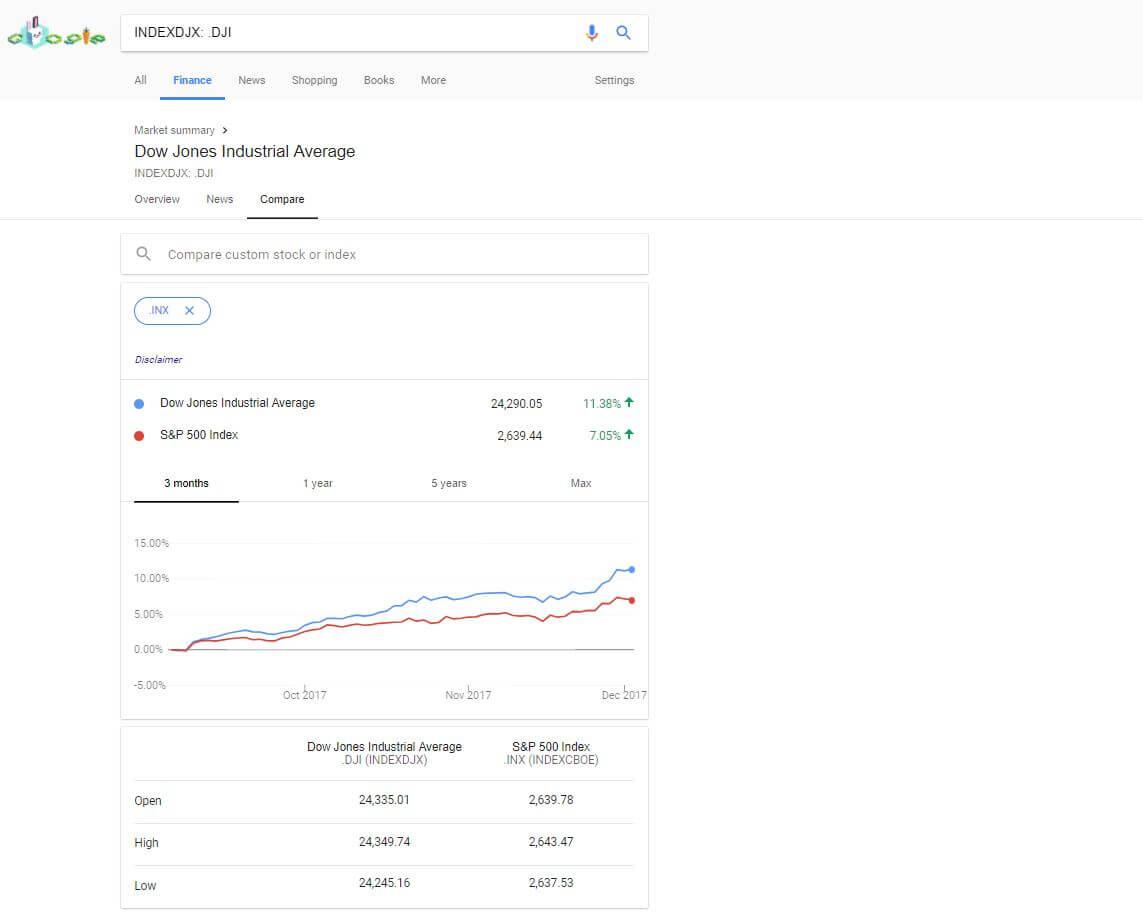Written by Matthew Paulson
March 26, 2018

Google Finance has long been a tool that investors have relied on to monitor their portfolios, view real-time stock charts and read news for their favorite companies. Google Finance had received a lot of initial attention from its engineers when it launched in 2006, adding a variety of new features and tools throughout the years. In 2008, it was one of the first financial news websites to get real-time stock quotes from NASDAQ and the New York Stock Exchange. At some point, Google’s product team largely stopped paying attention to Google Finance. It received a minor facelift in 2014 or 2015 and made a slight change to how headlines were displayed in 2015, but until recently, Google Finance was largely the same stock research tool that it was when it launched in 2006.
What’s New with Google Finance
On November 28th, 2017, Google product manager Haimin Lee announced significant product changes for Google Finance that would turn Google Finance into another search tab of Google.com rather than a standalone portal. Google said they were “introducing an expanded finance experience directly inside Google Search on desktop and the mobile web” because “global search interest in finance and stocks has more than doubled in the last five years.”
The new version of Google Finance provides a handful of news stories for large-cap publicly-traded companies, general market news, real-time stock and currency prices and that’s about it. You can access it by navigating to www.google.com/finance or by clicking the finance tab under the “More” drop down on any Google search results page.

If you search for the stock ticker of a publicly-traded company, you’ll see a minimally-functional stock chart, news stories from a small number of established publishers and a quarterly-income statement. There’s also a minimalist stock-comparison tool that allows you to compare charts of different companies.

What’s Missing from the New Google Finance?
If this were Google’s first attempt to provide relevant news and information for publicly-traded companies, most investors would see this as a decent and modest start to bringing market data and research into Google’s search results. It certainly doesn’t hit the mark on providing everything investors are looking for when researching a stock, but it’s not a terrible start either. However, this isn’t Google’s first attempt at creating a vertical search engine for the stock market. The old version of Google Finance had much better tools and data than is available in the new Google Finance.

Here’s what was in the old Google Finance that is no longer available:
- Portfolios – Many investors used Google Finance Portfolios to track the value of the companies in their stock portfolios. Google Finance also allowed you to compare the performance of your stocks to major market indices and showed upcoming events, such as earnings dates and conference calls for companies on your watchlist. Many investors used Google Finance Portfolios tool because it had real-time prices and had information on just about every stock around the globe. Unfortunately, that feature is no longer available in the new Google Finance. It has been replaced by a much simpler watchlist that does not show you the value of your portfolio.
- News from Google News – Google Finance previously displayed news results from websites included into Google News. This allowed most financial news websites to have their content displayed for companies in Google Finance. The new Google Finance has now limited headlines to small group of selected major publishers, which has improved the quality of headlines that appear for large companies but has all but prevented company-specific news from appearing in Google Finance. If you want to find the headlines that had previously showed up in Google Finance, you’ll now need to click on the “news” tab in Google to replicate the functionality previously offered by Google Finance.
- Fundamentals and Company Overviews – Google Finance company profile pages had previously listed a variety of key financial metrics (dividend yield, market cap, P/E ratio, trading volume, etc.). It had also provided overviews of a companies’ business models from Reuters, a list of key executives, upcoming events like earnings dates and links to other resources such as MaketWatch, EDGAR and MSN Money. None of this information appears on the new Google Finance, except for an abbreviated company description from Wikipedia.
- Balance Sheets and Cashflow Statements – Google Finance previously provided users quarterly balance sheets, income statements and cashflow statements for most companies. Now, Google Finance only shows companies’ income statements.
- Stock Screener – Google Finance previously had a stock screening tool that allowed users to find companies by market cap, sector, country, P/E ratio, dividend yield and a few other metrics. While it was a pretty basic tool, it allowed people to identify trades directly in Google Finance. This feature is missing from the new Google Finance.
- Google Domestic Trends – Google Domestic Trends was a unique feature that allowed users to identify “search traffic across specific sectors of the economy.” For many major industries, you could view a chart of how search traffic has changed for key terms in that industry over time. This feature is also missing from Google Finance.
What Users are Saying
Long-time Google Finance users are almost universally unhappy with the new iteration of Google Finance. Investors that used Google Finance’s portfolio monitoring tool felt like they were left high and dry and are looking for alternative tools, like those offered by sites like MarketBeat, FinViz and Wallmine to keep track of their portfolios. Others are upset by the overall lack of functionality and weaker chart functionality in the new Google Finance.
Here’s what a few users Tweeted about the new Google Finance:
Google Finance Alternatives:
Fortunately for investors, there are many alternative websites that provide better tools and information than Google did even before their recent set of “improvements.”
There is no “one size fits all” replacement for Google Finance, but here are some other websites that Google Finance refugees should consider to replace Google Finance's suite of tools:
- MarketBeat – MarketBeat offers some of the best company profile pages on the web. For any company, you can view real-time analyst recommendations, financials, dividend information, earnings information, insider trading activity, SEC filings, social media activity from StockTwits, a real-time chart from TradingView and headlines from many financial publishers. MarketBeat also offers real-time financial calendars, analyst recommendations and a web-based portfolio monitoring tool called My MarketBeat.
- Barchart – Barchart provides some of the best fundamental market data and stock screening tools that are available on the web. Their screeners allow investors to slice and dice the market using dozens of unique criteria.
- FinViz – FinViz offers real-time stock prices and charts by market, sector and ticker. Many investors use FinViz’s best-in-class stock screener and innovative sector maps. FinViz also offers a portfolio monitoring tool, news headlines and a couple of other financial calendars.
- StockCharts.com – Investors looking to create and view advanced stock charts are well-served by StockCharts.com and its competitor Big Charts from MarketWatch.
- Yahoo Finance – Yahoo Finance has long been Google Finance’s largest competitor and is a good solution for investors looking for a portal-type website to research stocks. Yahoo Finance offers comprehensive company profile pages, a portfolio monitoring tool, a stock screening tool and news headlines for most companies. The biggest downside of using Yahoo Finance is that its ad layouts are very aggressive and can make the site difficult to use.
How to Access the Old Google Finance
Update: 3/26/2018 - As of March 19th, 2018, Google has officially discontinued the old version of Google Finance. Navigating to finance.google.com now redirects to the new version of Google Finance.
For Google Finance diehards, Google has left the old version of Google Finance up at finance.google.com. The old Google Finance appears to be fully functional for the time being, but it’s hard to imagine that Google will leave it up indefinitely. Investors should fully anticipate that finance.google.com (old Google Finance) will redirect to www.google.com/finance (new Google Finance) in the near future.
What’s next for Google Finance?
Google trends to be tight-lipped about the future product plans for their vertical search engines. In the past, changes to tools like Google News and Images have launched without any advanced notice. Based on Google’s past treatment of its finance users, investors will probably see some small improvements based off their most vocal feedback. It does seem that Google does want to bring back a version of their portfolio monitoring tool, but it’s hard to know if or when that feature will launch. In the meantime, investors are probably better off finding replacement tools like those listed above for their research needs.
Like this article? Share it with a colleague.